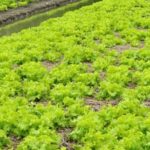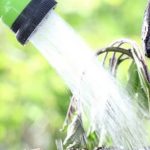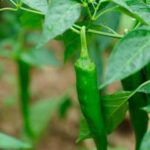East Texas gardening vegetables offer a unique experience due to the region’s specific climate and soil conditions. The rich, fertile soil and warm, humid climate of East Texas create the perfect environment for growing a wide variety of vegetables.
In this article, we will explore the best vegetables for East Texas, provide tips for preparing the soil, offer guidance on planting and maintenance, discuss strategies for managing pests and diseases, and share advice on harvesting and storage. We will also showcase success stories of thriving East Texas vegetable gardens and provide valuable resources for gardening enthusiasts in the region.
The climate of East Texas is characterized by hot summers and mild winters, creating an extended growing season that allows for a diverse range of vegetables to thrive. Additionally, the region’s well-drained sandy loam and clay soils provide excellent conditions for cultivating a bountiful vegetable garden. With the right knowledge and techniques, East Texas gardeners can enjoy a successful harvest year-round.
Whether you are a novice or experienced gardener, understanding the unique climate and soil of East Texas is essential for achieving optimal results when it comes to vegetable gardening. By following the comprehensive guidelines in this article, you will be well-equipped to cultivate a flourishing vegetable garden in your own East Texas backyard.
Best Vegetables for East Texas
When it comes to East Texas gardening vegetables, there are several options that thrive in the unique climate and soil of the region. One of the top vegetables for East Texas is okra, which loves the hot and humid climate of the area. It is a versatile vegetable that can be used in a variety of dishes and is relatively low-maintenance.
Another excellent option is tomatoes, which also do well in the warm weather of East Texas. They require plenty of sunshine and well-drained soil to flourish.
In addition to okra and tomatoes, bell peppers are another great choice for East Texas gardening vegetables. They thrive in the warm weather and are extremely versatile in cooking. With proper care and attention, these vegetables can produce plentiful harvests throughout the growing season.
It’s important to keep in mind that while these vegetables thrive in East Texas, proper preparation of the soil and regular maintenance are essential for successful growth. By choosing the right vegetables for the region and following best practices for planting and care, gardeners can enjoy a bountiful harvest from their East Texas gardens.
| Vegetable | Region |
|---|---|
| Okra | East Texas |
| Tomatoes | East Texas |
| Bell Peppers | East Texas |
Preparing the Soil
When it comes to successful vegetable gardening in East Texas, one of the most crucial steps is preparing the soil. The unique climate and soil conditions of the region require specific considerations to ensure that the vegetables thrive. Here are some tips for ensuring that the soil is ready for successful vegetable gardening in East Texas.
First and foremost, it’s important to conduct a soil test. East Texas has a diverse range of soil types, from sandy loam to clay, and these variations can significantly impact the success of your vegetable garden. A soil test will provide valuable information about the pH level, nutrient content, and overall health of the soil, allowing you to make informed decisions about any necessary amendments.
In addition to conducting a soil test, organic matter should be incorporated into the soil to improve its structure and fertility. This can be achieved by adding compost or well-rotted manure, which will help improve drainage in clay soils and water retention in sandy soils. In East Texas, where hot and dry conditions can be prevalent during certain times of the year, ensuring good water retention is especially important for the health of your vegetable garden.
Properly preparing the soil sets the foundation for a successful vegetable garden in East Texas. By taking these steps to understand and amend your soil as needed, you will be on your way to growing healthy and thriving vegetables that are well-suited to the unique conditions of East Texas.
| Tips for Preparing Soil | Benefits |
|---|---|
| Conduct a soil test | Provides valuable information about pH level and nutrient content |
| Incorporate organic matter | Improves soil structure and fertility |
| Improve water retention | Important for hot and dry conditions in East Texas |
Planting and Maintenance
When it comes to planting and maintaining a vegetable garden in East Texas, there are several key steps to keep in mind. The unique climate and soil of the region require special considerations to ensure a successful harvest. From choosing the right plants to providing proper care, here is a step-by-step guide for planting and maintaining vegetables in East Texas.
Choosing the Right Vegetables
The first step in planting a successful East Texas vegetable garden is choosing the right plants. Some vegetables are better suited to the warm, humid climate of East Texas than others. Heat-loving vegetables such as tomatoes, peppers, okra, and sweet potatoes thrive in the region’s conditions. Additionally, leafy greens like collard greens, kale, and Swiss chard can withstand the heat and humidity of East Texas summers.
Preparing the Planting Beds
Before planting your vegetables, it’s essential to prepare the planting beds properly. Start by clearing any weeds or debris from the area and loosening the soil with a garden fork or tiller. Adding compost or organic matter can help improve the soil structure and provide essential nutrients for your growing plants. In East Texas, raised beds can be particularly beneficial for vegetable gardening as they provide better drainage and allow for easier soil amendment.
Caring for Your Vegetable Garden
Once your vegetables are planted, it’s crucial to provide them with proper care to ensure a bountiful harvest. This includes regular watering, especially during hot and dry periods, as well as mulching to help retain moisture and suppress weeds.
Additionally, applying a balanced fertilizer can help keep your plants healthy and productive throughout the growing season in East Texas. Regular monitoring for pests and diseases is also essential, as early detection can prevent infestations from causing significant damage to your crops.
Managing Pests and Diseases
Pests and diseases can pose a significant challenge for East Texas gardeners, but with the right strategies, they can be managed effectively. The region’s warm and humid climate creates an ideal environment for a wide range of pests and diseases that can wreak havoc on vegetable gardens. However, by implementing proactive measures and staying vigilant, gardeners can protect their crops and ensure a bountiful harvest.
Companion Planting
One effective strategy for controlling pests in East Texas vegetable gardens is companion planting. By interplanting certain vegetables with herbs or flowers that naturally repel pests, gardeners can create a more balanced ecosystem that discourages infestations. For example, planting basil alongside tomatoes can help deter aphids, while marigolds can repel nematodes when planted near vegetables like carrots or potatoes.
Organic Pest Control
Using organic pest control methods is essential for maintaining the health of the soil and the overall ecosystem of the garden. Options such as neem oil, diatomaceous earth, or insecticidal soap can help manage common pests like aphids, caterpillars, and spider mites without harming beneficial insects or contaminating the produce with harmful chemicals. Additionally, introducing natural predators such as ladybugs or praying mantises can provide long-term pest control benefits.
Disease Prevention
Preventing diseases in East Texas gardens begins with selecting disease-resistant varieties whenever possible. Additionally, ensuring proper air circulation between plants, practicing good watering habits to avoid fungal infections, and regularly cleaning up plant debris can all contribute to reducing the risk of disease outbreaks. If diseases do appear in the garden, removing affected plants promptly and applying organic fungicides as needed can help prevent further spread.
By implementing these strategies and staying attentive to the needs of their vegetable crops, East Texas gardeners can minimize the impact of pests and diseases on their gardens while enjoying a successful harvest of homegrown produce.
Harvesting and Storage
Harvesting and storing vegetables in East Texas is an essential part of the gardening process to ensure optimal freshness and longevity of the produce. The unique climate and soil in this region create the perfect conditions for a variety of vegetables to thrive, but knowing how to properly harvest and store them is key to enjoying the fruits of your labor for an extended period.
When it comes to harvesting vegetables in East Texas, timing is everything. It’s crucial to pick your vegetables at the peak of ripeness to ensure the best flavor and nutritional value. For example, tomatoes should be harvested when they are fully colored but still firm, while green beans are best picked when they are long and slender. Be sure to use sharp garden shears or a knife to avoid damaging the plants and causing unnecessary stress.
After harvesting your vegetables, it’s important to store them properly to maintain their freshness. Many East Texas gardeners recommend using a cool, dry place such as a root cellar or a refrigerator with high humidity settings for optimal storage conditions.
Some vegetables like carrots and beets can be stored directly in the ground with mulch for insulation during colder weather. By properly storing your harvested vegetables, you can extend their shelf life and enjoy them well beyond the growing season.
In addition to proper storage techniques, it’s important to handle your vegetables with care during harvesting and post-harvest activities. Bruising or mishandling can lead to premature spoilage, so gentle handling is key. By following these tips for harvesting and storage, East Texas gardeners can maximize the freshness and longevity of their homegrown produce throughout the year.
Success Stories
One of the best ways to learn about successful gardening in East Texas is by hearing real-life success stories from local gardeners. Here are some inspiring examples of individuals who have managed to cultivate thriving vegetable gardens in this unique region:
The Smith Family
The Smith family, located in Tyler, Texas, has turned their backyard into a bountiful vegetable garden. They have successfully grown a variety of vegetables, including tomatoes, bell peppers, and okra. By utilizing raised beds and organic gardening techniques, they have been able to combat the challenges posed by East Texas’ soil and climate.
The Rodriguez Community Garden
In the city of Longview, a group of dedicated community members came together to establish the Rodriguez Community Garden. This collective effort has resulted in a flourishing garden filled with a wide array of vegetables such as squash, cucumbers, and green beans. By sharing knowledge and resources, the members of this community garden have created a supportive environment for successful vegetable gardening in East Texas.
The Johnson Farm
Located in Nacogdoches, the Johnson family farm has been operating for over three generations. They have mastered the art of growing traditional Southern vegetables like collard greens, sweet potatoes, and black-eyed peas. Their commitment to sustainable farming practices has allowed them to produce high-quality produce that thrives in East Texas’ climate.
These success stories serve as a testament to the fact that with dedication, knowledge, and perseverance, it is possible to achieve an abundant vegetable harvest in East Texas despite its unique challenges. By learning from these examples and implementing their strategies, aspiring East Texas gardeners can also achieve similar success with their own vegetable gardens.
Resources for East Texas Gardeners
In conclusion, East Texas offers a unique climate and soil that presents both challenges and opportunities for vegetable gardening enthusiasts. By understanding the best vegetables for the region, preparing the soil, and implementing effective planting and maintenance techniques, gardeners can successfully cultivate a bountiful harvest. Additionally, managing pests and diseases, as well as learning proper harvesting and storage methods, are crucial aspects of maintaining thriving gardens in East Texas.
As seen in success stories from local gardeners, it is possible to create flourishing vegetable gardens in East Texas with dedication and the right resources. To further support gardening enthusiasts in the region, there are various tools, organizations, and resources available. Whether it’s obtaining high-quality seeds or seeking advice from experienced gardeners through local organizations, these resources can provide valuable guidance for those looking to enhance their gardening skills.
Ultimately, with the right knowledge, tools, and support systems in place, East Texas gardening enthusiasts can continue to explore the rich potential of vegetable gardening in the region. By staying informed about best practices and leveraging available resources, individuals can experience the joy of growing their own fresh produce while contributing to the vibrant gardening community in East Texas.
Frequently Asked Questions
What Plants Grow Well in East Texas?
East Texas has a favorable climate for growing a variety of plants, including azaleas, roses, hydrangeas, and crepe myrtles. When it comes to vegetables, okra, tomatoes, and southern peas thrive in the region’s warm and humid conditions.
When Should I Start My Garden in East Texas?
In East Texas, the best time to start your garden is typically in late February or early March. This allows for the soil to warm up and reduces the risk of frost damage to young plants. It’s important to consider the specific planting dates for each type of plant you want to grow.
What’s the Easiest Vegetable to Grow in Texas?
The easiest vegetable to grow in Texas is often considered to be peppers. They require minimal care and are generally resistant to pests and diseases. Additionally, they can be grown in containers or directly in the ground, making them a versatile option for beginner gardeners.

If you’re looking to get into vegetable gardening, or are just looking for some tips on how to make your current garden better, then you’ve come to the right place! My name is Ethel and I have been gardening for years. In this blog, I’m going to share with you some of my best tips on how to create a successful vegetable garden.





